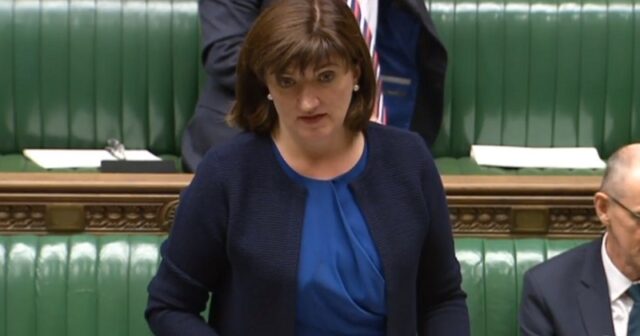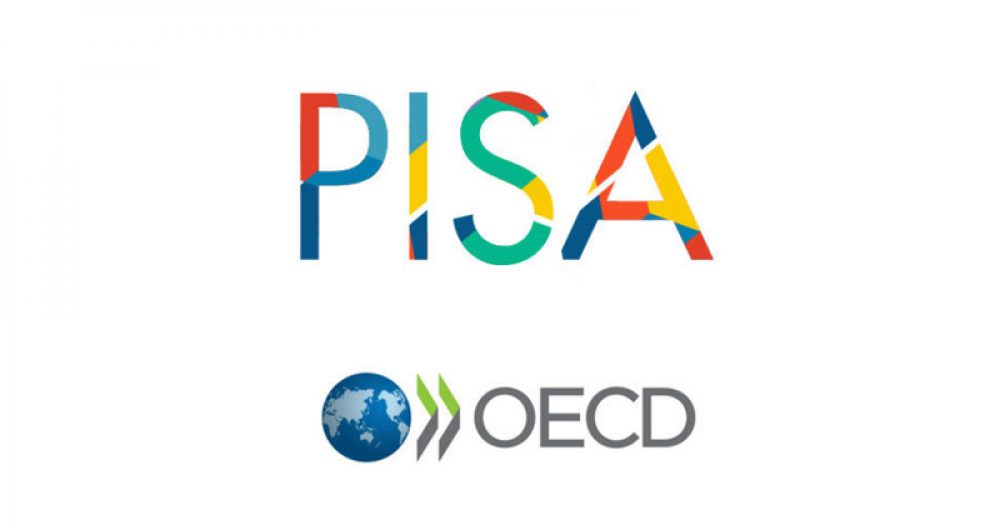The government says it will continue to measure the success of its reforms on Pisa scores despite schools minister Nick Gibb hitting out at the organisation that produces them for becoming “too political”.
In an interview this month Gibb accused the Organisation for Economic Co-operation and Development, which publishes the international rankings, of pushing a “progressive” curriculum.
Pisa’s architect Andreas Schleicher favours a “competence-based” approach to learning that doesn’t work, Gibb wrote in researchEd magazine.
His more critical stance towards the OECD contrasts with the top status given to Pisa tests by former education secretary Nicky Morgan.
When asked by the Commons education select committee in 2015 how the government’s reforms would be judged, her department said “by reference to international tables of student attainment, such as Pisa.”
English pupils will sit the Pisa tests, which take place every three years, this autumn. Results are due at the end of 2019.

A spokesperson for the Department for Education insisted the results will be “one of lots of ways” by which the government’s education reforms are measured.
Other measures include Pirls, which tests reading and literacy, and Talis, which surveys teacher working conditions, they told Schools Week.
Gibb’s shot at the OECD also contrasts with his own use of Pisa findings to justify reforms in the past.
Last year he cited a Pisa report which found that enquiry-led learning was associated with lower science scores to justify “direct instruction” methods. He has also cited Schleicher’s support for greater autonomy in schools.
In global Pisa rankings published in 2016, the UK lagged behind other countries at 27th in maths, 22nd in reading and 15th in science. A Pisa wellbeing test also showed UK 15-year-olds are some of the unhappiest in the world.
In Pisa’s collaborative problem-solving tests last year, the UK came 15th.
But Schleicher has criticised the UK for coming out with a top score for too much rote-learning.
He said at a speech in New York this year the UK is losing ground to far eastern countries because too much focus is placed on memorisation and a core curriculum and not enough on creativity.








Can we learn from Finland ?
Finland performs much better than England and the USA in the PISA test. In this international test the students have to apply their knowledge in novel situations. It seems that their average pupils achieve comparatively higher scores than those in other countries. Does this reflect Government directives, the headteacher, the teachers, teaching methods, continual assessment, revision methods or parental involvement?
At the Government level …
The Government in Finland introduced a law so that all children have a 15 minute break after 45 minutes of teaching. This prevents cognitive overload for pupils and teachers. It also provides time for the teacher to speak to misbehaving pupils and achieve good discipline.
The Government decided on mixed ability classes. (Mixed ability has recently been shown in UCL randomised trials to be more effective than streaming or setting). In Finland bright pupils are paired with less able pupils and each has to describe what has been learned in the lesson. This is peer to peer assessment and pupils soon realise what they have and have not learned.
The Government sets out a curriculum that is short with only a few pages of text per subject. The curriculum is not overwhelming, leaving time in the year for teachers to plan local activities and innovate.
The Government approves science and mathematics textbooks that have been tried and tested in schools. Textbooks have teacher guides and these provide lesson plans for teachers for every term. They also contain extension material, printouts and projects. Textbooks are supplemented with free internet material.
The Government directs examination boards to set questions that assess the understanding of concepts and their application in novel situations rather than just factual recall. The application of knowledge (problem solving) is a higher order of skill in Blooms Taxonomy of Learning. There is a minimum reliance on multiple choice questions as these are viewed as only useful for testing factual recall.
The Government believes that SATs testing is unnecessary as continual assessment provides sufficient data about pupil attainment.
The Government is now reviewing the curriculum to periodically introduce topics that require strategies which are needed in modern industry, such as working together and creativity.
At the Headteacher level…
The school day is organised with one hour periods and each period includes a lesson of 45 minutes and a 15 minute break. There are also morning and afternoon 15 minute coffee breaks and a lunch hour.
The Head meets each teacher in an interview every term to discuss class progress, any problems with individual pupils, innovations, new topics etc.
There are no heads of department and one teacher is given responsibility for ordering equipment, materials etc.
The Head is responsible for standards and these are checked yearly by the government who give an examination to a few pupils in a year group. School inspectors can visit if results are unsatisfactory.
Poorly performing pupils or gifted pupils are interviewed with their parents, the class teacher, a school psychologist and a social worker present.
The Head provides an academic route or a vocational route for pupils aged 13+.
The Head insists that good discipline is introduced quickly in the school and is effective at an early age. Head teachers believe that learning cannot occur if minor disruption occurs in lessons.
At the teacher level…
Teachers enjoy their jobs and few leave teaching.
Some teachers are only qualified to teach pupils between the ages of 7 to 13. They teach all subjects in a mixed ability class with less than 20 pupils. They keep the same class from year to year and soon know the pupils that need extra support.
Other teachers are subject specialists and teach pupils aged 13+
Teachers on exchange visits comment that lessons are not drastically different to those in their countries and comment that Finnish teachers are not ‘super teachers’.
A common lesson format is a period of teacher talk followed by the pupil reading the textbook and answering some factual recall and problem solving questions. A short test is then used to monitor learning in the lesson. In summary, passive learning is followed by active learning and a short test gives immediate feedback. Teacher talk probably accounts for 15 minutes in the lesson.
Teachers are trained to monitor learning effectively with short tests in every lesson and termly tests. The results for the latter are used for grades (these are entered into a national database). This is continual assessment.
Teachers keep a portfolio of children’s work and comment on this frequently. New targets are set after a discussion with the pupil.
Teachers set a short homework every week and pupils mark their own homework in class as the teacher goes through the marking scheme. Pupils have to comment on their results and results are entered into the national database. If no homework is done this is also recorded.
Teachers use textbooks and the lesson plans in the teacher guides. They feel there is no need to ‘reinvent the wheel’.
Teachers are expected to design a new topic for lessons at the end of the year and show their creativity to the Headteacher.
Teachers have 2 hours of professional development per week to discuss lessons, learning and new ideas.
At the pupil level…
Pupils enter the classroom and take off their shoes.
Pupils listen, read their textbook and answer questions, write summaries and are tested in every lesson.
Pupils keep a portfolio of work and are self critical about their own work using a proforma.
Pupils say they appreciate the regular 15 minute breaks every hour.
Pupils work well and quietly in class for 45 minutes.
Pupils conduct peer to peer tests as a revision process. A bright pupil is paired with a less able pupil. Each pupil has to explain a concept to the other pupil and they persist until mastery is achieved.
Older pupils do online guided projects using school computers and use a special program that has prompts. Some homework involves using the internet for research.
Parents…
Parents receive a form at the end of term which provides the grade for the end of term tests. They have to sign this and return it to the school.
Parents attend parents’ evenings.
Parents are satisfied that homework is brief (sometimes less than 30 minutes per week) and realise that children need time to have hobbies and interests.
Some parents do not like the idea of peer to peer revision as it seems that the bright pupil is being used as a teacher. They want their bright pupils to do extra studies. Schools believe that this method benefits both abilities.
Parents can see test results on a national database.
Parents can be contacted by teachers using mobile phone messages if progress is slow or behaviour is poor.
Parents buy school workbooks and textbooks. These are used daily in class and parents can see that their children are getting a broad, balanced and relevant curriculum.
Parents pay for examination entries.
Parents do not make sandwiches for their children. Pupils receive a free meal at school and they are not allowed off site to buy junk food.
Parents pay for extra curricular activities after school. Music is very popular.
Comment…
It would seem that there are many similarities and differences between Finnish education and that of other countries. There is certainly no one silver bullet for success. Finnish success has been achieved by implementing a complex well organised system. The major factors are:-
1. At the classroom level the most obvious factor is the typical lesson plan which is composed of a short teacher talk phase (15 mins), an active learning phase using textbook questions to enhance learning and a short test phase to provide feedback to the learner and the teacher.
2. The use of continuous assessment is another important factor in that Finnish pupils are regularly made accountable for their own learning through lesson tests, termly tests, portfolios and self assessment proformas.
3. Finnish examination questions have a standard format. Copious text is initially provided before questions and this must be carefully read and analysed by pupils. Questions then require the pupil to apply the concepts they know to the novel context. Teachers incorporate this type of question into their lessons as examination preparation and problem solving becomes a regular learning activity for pupils. Such questions are similar to PISA questions.
The three factors above could easily be implemented in any country that is considering curriculum change. I believe that they are fundamental to the success of Finland in PISA.
Further reading…
‘Cleverlands’ by Lucy Crehan on Kindle.
Lucy Crehan was a science teacher who taught in several countries to understand their success. She wrote a book called ‘Cleverlands’ and there is a long chapter on the Finnish educational system.
In the USA and the UK 50% of new teachers leave the profession within 5 years. In Finland almost none leave in 5 years! The educational system in Finland has 15 minute breaks every lesson period of one hour. This is not only to prevent cognitive overload for pupils it also prevents cognitive overload for teachers. It would seem that the implementation of this factor into a school timetable would have an immediate benefit.
In the USA and UK the use of standardised testing and league table accountability has led to schools implementing months of revision preparation using previous questions. It is now even leading to schools reducing the range of subjects taught in each year. Cramming unfortunately leads to cognitive overload and mental health problems. The Finnish model of yearly national samples taken from a few pupils each year in each school is a check on standards and this could be easily introduced together with continuous assessment to provide further data about school performance. Inspectors would then only need to visit failing schools and support them.